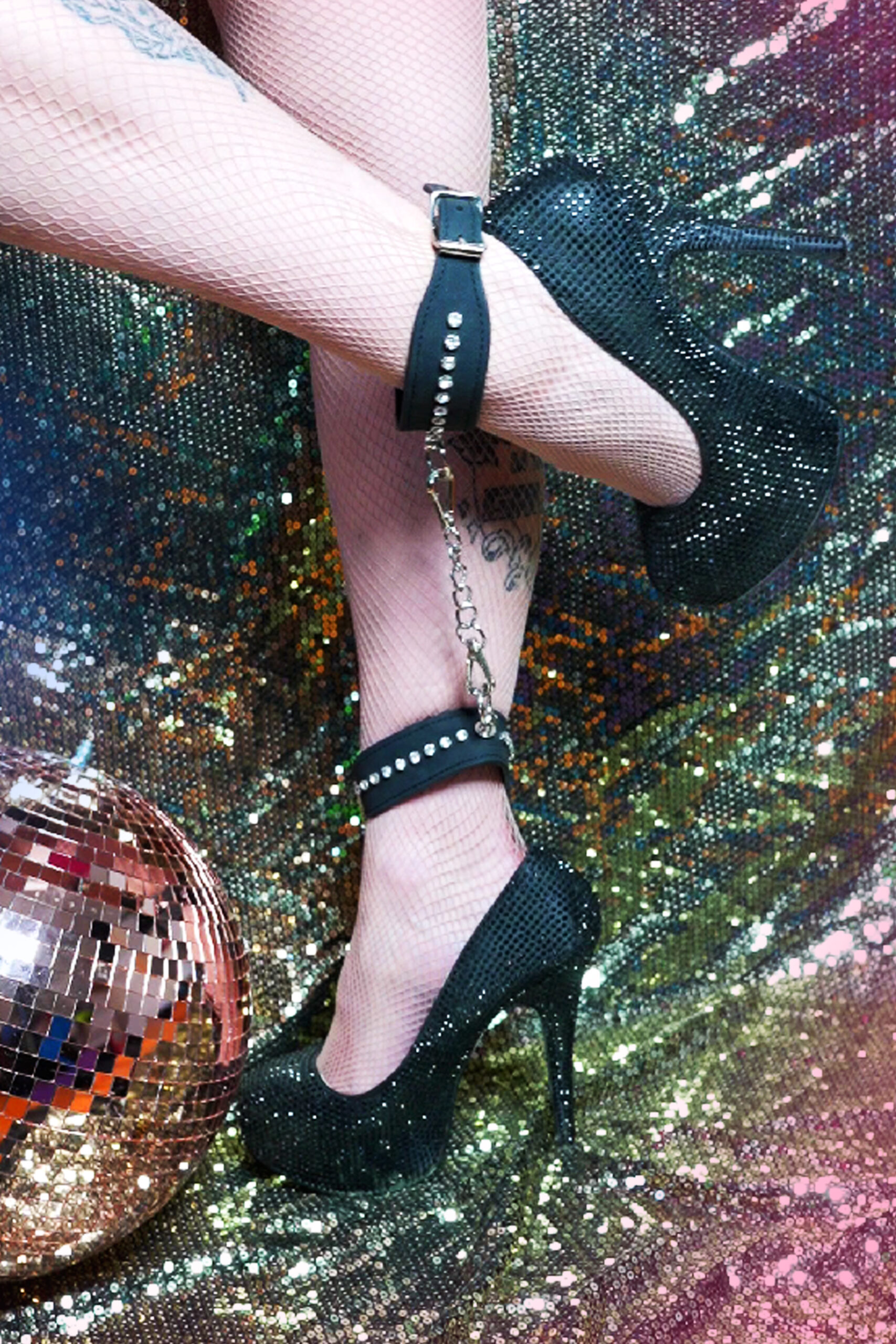Exploring How Skoliosexuality Challenges Traditional Views Of Sexual Attraction
- by itzadmin
- Posted on May 11, 2025
Defining Skoliosexuality
Skoliosexuality, a relatively new term in the lexicon of sexuality, poses a unique challenge to conventional understandings of sexual attraction. It refers to an enduring pattern of romantic or sexual attraction towards individuals with scoliosis, a common spinal condition characterized by an abnormal sideways curvature of the spine.
Characteristics and Experiences
Skoliosexuality challenges traditional views of sexual attraction by focusing on a physical characteristic that is often viewed as purely medical rather than inherently erotic. Unlike many other sexual orientations defined by gender identity or expression, skoliosexuality centers on a specific physical trait, highlighting the diversity and complexity of human desire.
Individuals who identify as skoliosexual may find themselves drawn to people with scoliosis for various reasons, ranging from an aesthetic appreciation of the spinal curvature to a deeper emotional connection fostered by shared experience or understanding. It’s important to note that experiences within the skoliosexual community are diverse and individual. Some individuals might be exclusively attracted to those with scoliosis, while others may have a broader spectrum of attractions where scoliosis plays a significant role.
Exploring skoliosexuality challenges societal norms that often compartmentalize sexual attraction based on conventional criteria. By shedding light on this unique orientation, we can foster greater understanding and acceptance of the multifaceted nature of human desire.
Differentiating from Other Sexual Orientations
Skoliosexuality is a term used to describe romantic or sexual attraction towards individuals with scoliosis, a spinal condition characterized by an abnormal sideways curvature of the spine. It distinguishes itself from other sexual orientations primarily by focusing on a physical trait rather than gender identity or expression.
For example, while homosexuality refers to attraction between individuals of the same gender and heterosexuality to attraction between individuals of different genders, skoliosexuality centers specifically on the presence of scoliosis as a defining characteristic of attraction. This highlights the diversity of human desire and expands our understanding beyond traditional categories.
It’s important to remember that individual experiences within the skoliosexual community are varied. Some individuals may be exclusively attracted to people with scoliosis, while others may have a broader range of attractions where scoliosis plays a significant role.
Historical Context of Skoliosexuality
Skoliosexuality, a term gaining traction in discussions of sexual orientation, centers on romantic or sexual attraction towards individuals with scoliosis. This unique orientation challenges traditional understandings of desire by emphasizing a physical trait – the abnormal spinal curvature characteristic of scoliosis – as a defining factor in attraction.
Ancient Perceptions of Male-Female Attraction

Historically, perceptions of male-female attraction have been heavily influenced by societal norms and cultural beliefs. Ancient societies often viewed sexual attraction through the lens of procreation and social stability, emphasizing heteronormative pairings. In many cultures, marriage was seen as a union primarily for producing offspring and maintaining lineage.
Ancient Greece, known for its philosophical inquiries, had complex views on sexuality. While heterosexual relationships were considered the norm, pederasty, a system of same-sex relationships between adult men and adolescent boys, was accepted within specific social contexts. This practice was often seen as a means of educating and mentoring young men.
Roman society largely adhered to patriarchal structures, with sexuality primarily regulated by the needs of the state and the preservation of family lines. Heterosexual relationships were highly valued, and same-sex relationships were generally frowned upon, although there were instances of acceptance in specific social circles.
In many ancient cultures, physical appearance played a significant role in determining desirability. However, these perceptions often centered on idealized beauty standards rooted in cultural norms. Spinal curvature, like scoliosis, might have been viewed as a physical anomaly that could impact societal roles or perceived attractiveness.

Evolution of Understanding Through Time
Throughout history, societal views on sexual attraction have evolved significantly, reflecting changing cultural norms, beliefs, and understandings of human sexuality. Ancient societies often emphasized heteronormative pairings primarily for procreation and social stability. Ancient Greece exhibited a more nuanced approach, accepting same-sex relationships within specific contexts, while Roman society largely adhered to patriarchal structures and valued heterosexual relationships. Physical appearance played a significant role in determining desirability in ancient cultures, with idealized beauty standards rooted in cultural norms.
The concept of skoliosexuality, as it pertains to attraction towards individuals with scoliosis, is a relatively recent development. Historical records do not provide insights into whether such an orientation existed or was acknowledged in past civilizations.
As societies progressed through the Middle Ages and Enlightenment periods, views on sexuality became increasingly complex. Religious doctrines and philosophical debates shaped understandings of love, marriage, and sexual expression. The rise of scientific inquiry in the 18th and 19th centuries led to advancements in medical knowledge about conditions like scoliosis.
Modern society has witnessed a growing recognition of diverse sexual orientations, challenging traditional binary classifications and embracing a broader spectrum of human experiences. The emergence of terms like skoliosexuality reflects this ongoing evolution in understanding and acknowledging the complexities of human desire.
Social and Cultural Implications
Social and cultural norms have profoundly shaped our understanding of sexual attraction throughout history. Ancient civilizations often viewed sexuality through the lens of procreation and societal stability, emphasizing heteronormative pairings. Perceptions of physical attractiveness were also heavily influenced by idealized beauty standards rooted in cultural norms. The emergence of new terms like skoliosexuality, which describes romantic or sexual attraction towards individuals with scoliosis, challenges these traditional notions by highlighting the diversity and complexity of human desire.
Representation in Media and Popular Culture
Skoliosexuality’s introduction into discussions of sexuality brings a fresh perspective on the factors influencing attraction. It compels us to reconsider if our societal understanding of what constitutes “attractive” is limited and how physical characteristics, beyond the conventional, can factor into romantic or sexual interest.
The representation of skoliosexuality in media and popular culture is currently minimal. This lack of visibility can contribute to misconceptions and perpetuate stigma surrounding this unique orientation. Increased representation, whether through fictional characters, documentaries, or personal stories, is crucial for fostering understanding and acceptance within society.
Exploring the social implications of skoliosexuality necessitates a deeper examination of societal beauty standards and how they influence perceptions of desirability. If individuals with scoliosis are often marginalized or perceived as less attractive due to societal norms, it raises questions about the fairness and inclusivity of these standards. Skoliosexuality challenges these norms by centering attraction on a trait that is often viewed as undesirable.
Furthermore, skoliosexuality prompts us to consider the ethical implications of fetishizing or objectifying individuals based on a medical condition. It’s essential to approach discussions surrounding skoliosexuality with sensitivity and respect for the experiences and autonomy of individuals who identify as skoliosexual.
Impact on Family Structures and Relationships
Skoliosexuality, a relatively new term describing romantic or sexual attraction towards individuals with scoliosis, challenges traditional views on sexual orientation by focusing on a physical characteristic often viewed medically rather than erotically. This challenges societal norms that compartmentalize desire based on gender identity or expression.
The impact of skoliosexuality on family structures and relationships is complex and multifaceted. It necessitates a reevaluation of conventional notions of what constitutes an attractive partner, potentially disrupting established societal norms about desirability.
Families may experience challenges in understanding and accepting a loved one’s skoliosexual orientation, requiring open communication and education to bridge generational divides and promote acceptance within the family unit.
Societal reactions to skoliosexuality can influence relationship dynamics as individuals may face prejudice or discrimination based on their unique attraction. It is crucial to foster an inclusive environment where individuals feel safe expressing their identities without fear of judgment or marginalization.
Psychological Perspectives on Skoliosexuality
Skoliosexuality, a relatively new term in discussions of sexuality, centers on romantic or sexual attraction towards individuals with scoliosis. This unique orientation challenges traditional understandings of desire by emphasizing a physical trait – the abnormal spinal curvature characteristic of scoliosis – as a defining factor in attraction.
Developmental Theories and Influences
Skoliosexuality is a relatively new term used to describe romantic or sexual attraction towards individuals with scoliosis, a medical condition characterized by an abnormal sideways curvature of the spine. Unlike many other sexual orientations defined by gender identity or expression, skoliosexuality centers on a physical trait. This challenges traditional understandings of attraction by highlighting the diversity and complexity of human desire.
Developmental theories offer various perspectives on how individuals form their sexual attractions. Some theories emphasize biological factors, suggesting that genetic predispositions or hormonal influences play a role in shaping sexual orientation. Others propose that social and environmental factors contribute to the development of attraction patterns, including early childhood experiences, cultural norms, and personal relationships.

In the context of skoliosexuality, it’s possible that individual experiences with scoliosis – either personally or through interactions with others – may influence the development of this unique attraction. For example, someone might develop a deep appreciation for the strength and resilience associated with living with scoliosis, leading to an emotional connection that transcends physical appearance.
However, it’s important to avoid making generalizations about how individuals develop their attractions based on specific medical conditions. The complexities of human sexuality are multifaceted, and individual experiences vary greatly.
Exploring the Nature vs. Nurture Debate
The exploration of skoliosexuality brings into sharp focus the enduring debate between nature and nurture in shaping sexual orientation. While biological factors may contribute to an individual’s predisposition towards certain attractions, social and environmental influences undoubtedly play a role in shaping those desires.
For example, societal beauty standards can profoundly influence what individuals find attractive. If scoliosis is often portrayed negatively in media or within social circles, it might unconsciously bias perceptions of desirability, regardless of any innate biological inclination. Conversely, exposure to positive representations of people with scoliosis could contribute to the development of skoliosexual attraction.
It’s crucial to approach this complex issue with sensitivity and avoid simplistic explanations that solely attribute skoliosexuality to either nature or nurture. The human experience is multifaceted, and individual journeys towards understanding their own attractions are unique.
Challenges and Stigma Faced by Skoliosexual Individuals
Skoliosexuality, a relatively new term describing romantic or sexual attraction toward individuals with scoliosis, faces significant challenges and stigma within society. Because it centers on a physical trait often viewed medically rather than erotically, skoliosexual individuals may encounter misunderstanding, prejudice, and a lack of representation.
Misunderstandings and Misconceptions
Skoliosexuality, while gaining traction in discussions of sexuality, is still met with significant challenges and stigma within society. This stems from the fact that it centers on a physical trait – scoliosis – often viewed medically rather than erotically. This can lead to misunderstandings, prejudice, and a lack of representation for individuals who identify as skoliosexual.
One major challenge is the societal perception of scoliosis. It’s often viewed as a medical condition requiring treatment, rather than an aspect of physical diversity that can be found attractive. This medicalization of scoliosis contributes to the stigma surrounding skoliosexuality, making it difficult for individuals to feel comfortable expressing their attraction openly.
Misconceptions about skoliosexuality also abound. Some may assume it’s a fetish or a passing phase, rather than a legitimate and enduring sexual orientation. This lack of understanding can lead to judgment, discrimination, and feelings of isolation for those who identify as skoliosexual.
Furthermore, the lack of representation of skoliosexuality in media and popular culture perpetuates these misconceptions and contributes to its invisibility. Without seeing diverse representations of sexual orientations, including skoliosexuality, people may struggle to understand and accept this unique expression of attraction.
Legal and Social Discrimination
Skoliosexual individuals often face challenges and stigma due to the societal perception of scoliosis as a medical condition rather than a desirable physical trait. This can result in misunderstandings, prejudice, and a lack of acceptance from family, friends, and society at large.
Legal discrimination against skoliosexual individuals is not explicitly widespread due to the relative novelty of the term and its limited recognition in legal frameworks. However, underlying societal biases that contribute to discrimination against other marginalized groups can indirectly impact skoliosexual individuals. For instance, if someone experiences discrimination based on a perceived difference from social norms, their sexual orientation might be unfairly targeted.
The lack of legal protection for skoliosexuality leaves individuals vulnerable to potential discrimination in areas such as employment, housing, and healthcare. Without clear legal safeguards, skoliosexual individuals may face difficulties accessing equal opportunities and experiencing full societal acceptance.
It’s important to advocate for greater understanding and acceptance of skoliosexuality by challenging misconceptions, promoting open dialogue, and fostering inclusivity within society. This can involve educating others about skoliosexuality, supporting organizations that advocate for LGBTQ+ rights, and creating safe spaces where individuals feel comfortable expressing their identities without fear of judgment or discrimination.
Advocacy and Support Networks for Skoliosexual People
Skoliosexuality, a term gaining recognition in discussions of sexual orientation, describes romantic or sexual attraction towards individuals with scoliosis. It challenges traditional views by centering on a physical characteristic often viewed medically rather than erotically. As societal understandings of sexuality evolve, it’s crucial to create supportive environments that embrace diversity and foster inclusivity for all individuals.
Promoting Visibility and Acceptance
Advocacy and support networks are essential for creating a more inclusive environment for skoliosexual individuals. These networks can provide vital resources, education, and community support to help individuals navigate the challenges they may face.
One important aspect of advocacy is raising awareness about skoliosexuality and challenging misconceptions surrounding it. Educating the public about this unique orientation can help dispel myths and promote understanding and acceptance. This can be achieved through educational campaigns, workshops, and online platforms that provide accurate information about skoliosexuality.
Support networks offer a crucial space for skoliosexual individuals to connect with others who share similar experiences. These groups provide a sense of belonging, shared identity, and emotional support. They can also facilitate the sharing of resources, advice, and personal stories that can empower individuals and help them navigate the complexities of their identities.
Skoliosexual individuals often face unique challenges due to societal stigma and lack of understanding surrounding their orientation. Dedicated support networks can provide crucial emotional support, a sense of community, and access to resources that address specific needs. These networks can offer safe spaces for individuals to express themselves openly, share their experiences, and connect with others who understand their unique perspectives.
Advocacy efforts can play a pivotal role in promoting legal protections for skoliosexual individuals. This includes advocating for non-discrimination laws that prohibit prejudice based on sexual orientation, ensuring equal rights in areas such as employment, housing, and healthcare, and challenging discriminatory practices that may target individuals solely due to their attraction to people with scoliosis.
Resources and Organizations Offering Support
Skoliosexuality, a term gaining traction in discussions of sexual orientation, describes romantic or sexual attraction towards individuals with scoliosis. It challenges traditional understandings of desire by emphasizing a physical trait – the abnormal spinal curvature characteristic of scoliosis – as a defining factor in attraction.
While skoliosexual individuals face challenges and stigma due to societal misconceptions about scoliosis, resources and organizations are emerging to offer support and advocacy.
Here are some ways you can find support and information:
* **Online communities:** Search for online forums, social media groups, or dedicated websites that cater to the LGBTQ+ community or specifically address skoliosexuality. These platforms provide spaces for connection, shared experiences, and peer support.
* **LGBTQ+ organizations:** Many established LGBTQ+ organizations, such as The Trevor Project, GLAAD, and PFLAG, offer resources and support for a wide range of sexual orientations and gender identities. While they may not have specific skoliosexuality-focused services, their general support and advocacy can be valuable.
* **Local LGBTQ+ centers:** Many cities and towns have LGBTQ+ community centers that provide social events, support groups, and counseling services. These centers often offer a welcoming space for individuals to connect with others who share similar experiences.
It is important to note that information about skoliosexuality is still evolving as it is a relatively new term in discussions of sexual orientation.
Continued education, open dialogue, and advocacy are crucial for creating a more inclusive and understanding society where all individuals feel accepted and supported regardless of their sexual orientation.
rough sex ideas
Fringe Beverly Hills
My Private Goods
- Why Do I Feel Like I’m Not Getting Enough Air In My Lungs? - November 15, 2025
- What Is The Best Non-Surgical Face Tightening Procedure? - November 12, 2025
- What Are The Best CBD Gummies For Athletes’ Muscle Recovery - November 9, 2025
Defining Skoliosexuality Skoliosexuality, a relatively new term in the lexicon of sexuality, poses a unique challenge to conventional understandings of sexual attraction. It refers to an enduring pattern of romantic or sexual attraction towards individuals with scoliosis, a common spinal condition characterized by an abnormal sideways curvature of the spine. Characteristics and Experiences Skoliosexuality challenges…
